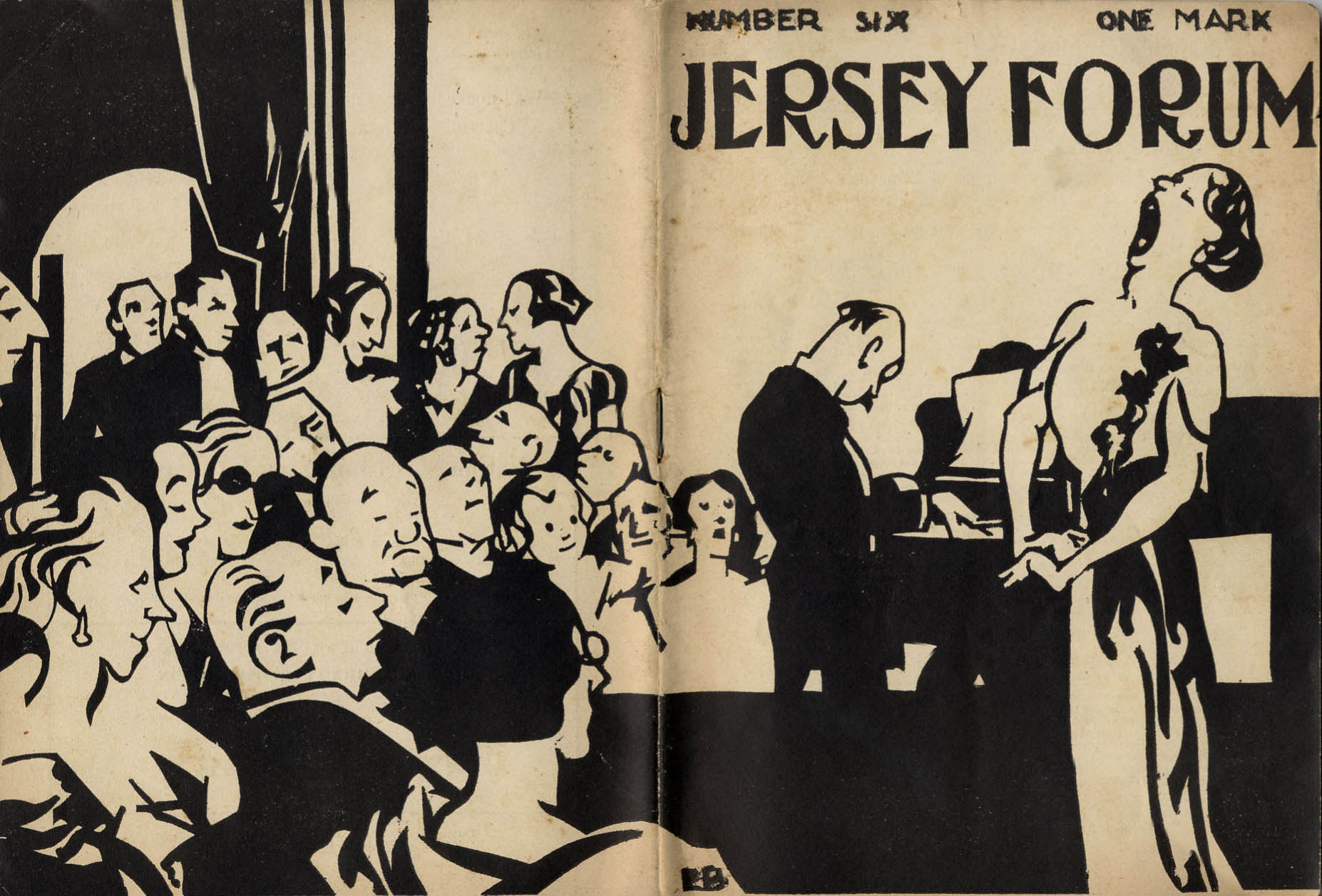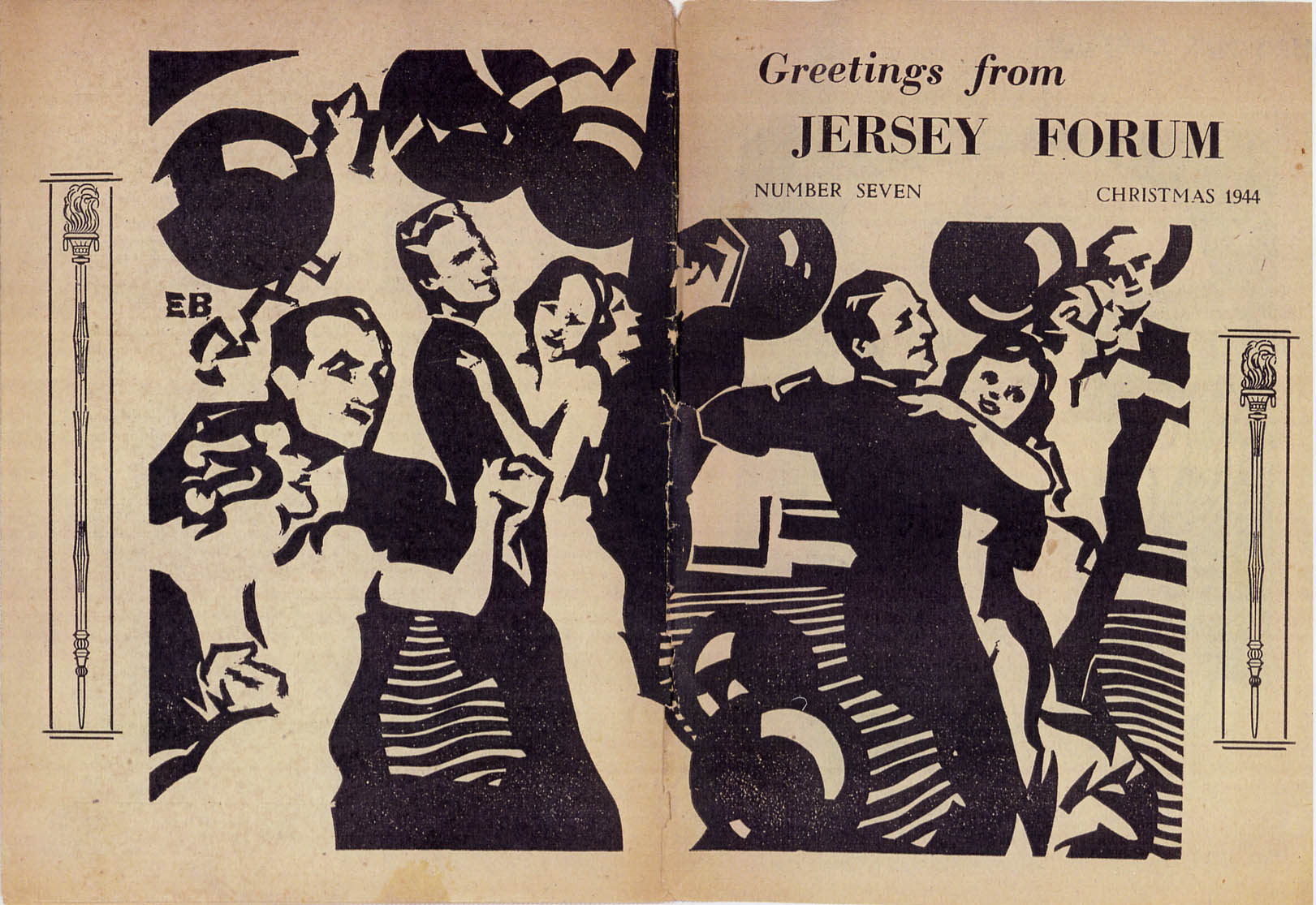Home >> Blampied >> Magazines >>
Jersey Theatre and Jersey Forum
7 Grosvenor Terrace, St Helier, Jersey
The first issue of this magazine was published in Jersey in June 1944 during the German Occupation of the Island, just as the Allies were beginning their advance across continental Europe. Within a few weeks the 35,000 Islanders and several thousand German troops were cut off from supplies for nearly a year before Liberation on May 9th 1945.
According to a note in the first issue, a magazine called Guernsey Theatrical Review
had been started four months earlier, so a precedent had been set and it acted as a stimulus for a magazine in Jersey.
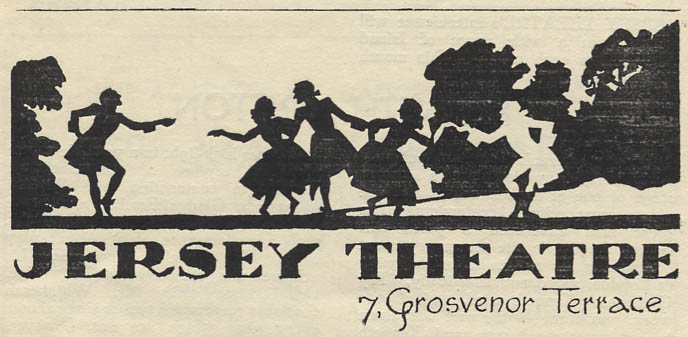
Heading to title page probably designed by Edmund Blampied
No credit was given in the first issue; the second and subsequent issues stated that the magazine was Edited and published by A. Michael Frowd
, the enterprising young publisher of two broadsheet poems also issued towards the end of the war.
The magazine began as Jersey Theatre but published only two issues before it was renamed Jersey Forum, because all public performances had been banned by the Germans. This change also gave the magazine a broader and more general remit, and was less specialised than a magazine concerned with the theatre alone
The second issue onwards had a prize crossword set by 'Renatus' (possibly Frowd's flat-mate René Franoux) and also offered a prize of one guinea for a comic verse. Issue 3 offered a prize of one guinea for a limerick which Mr Edmund Blampied chooses as most suitable to illustrate Jersey Forum's next cover
. Issue 5 had a unique serial number printed on the back cover of each issue which was entered into a raffle. The winning number entitled one lucky person to a prize worth five guineas, a substantial sum indicating the magazine was doing quite well. The number 627 was published in the Jersey Evening Post but was not claimed, according to Issue 6. The highest number that has been seen is 842, which perhaps indicates that about 1,000 copies were printed.
The price of all issues was shown on the cover as 1 Mark or Reich Mark. The official exchange rate was fixed by the Germans in 1940 at 9.6 to the Pound (Sanders, 2005) so a copy of the magazine cost about 2 shillings, which was expensive, but at the black exchange market rate One Mark was 6 - 8 pence. Although the price was given in Marks, probably as instructed by the occupying German authorities, it was probably sold in Sterling, using the bank notes designed by Blampied. A print run of 1,000 copies costing 2 shillings each would have generated £100 a month, plus revenue from advertising, which must have been enough to pay the printing costs and perhaps make a small profit.
By issue five it was not possible to cast the print using hot metal as there was no gas left, so the first two and last two pages were set in type by hand and the rest was printed using duplicating stencils. As the text of a stencil was bigger than type-set text, the number of pages was increased from 28 to 40 and the printed page was made wider. It was also not easy to find stencils after four years of Occupation, nor a typewriter with a small font or a long carriage so that the stencil could be typed sideways, but it was duplicated by a Mrs S.H. Le Brocq of Roseville Street, who was given credit on the rear cover.
The last issue was published at Christmas 1944, but the intention was to continue publishing as the prize crossword offered two six months subscriptions to 'JERSEY FORUM' or fifteen shillings ... for the first correct entry opened on the closing date of Monday, January 8th
. Perhaps the printer ran out of suitable paper for publishing as there were no imports, or perhaps it was too costly to print and make a profit. People in Jersey may also have had other things on their minds, such as how to find food, until the first Red Cross ship, the S.S. Vega, delivered food on 30th December 1944. Edmund Blampied described the situation vividly to Harold Baily, his American patron, in a letter written on 21st May 1945:
We were two weeks without bread and the Red Cross saved us just in time – We were without heating, gas, electricity, telephone - no cars, no buses, hardly any soap and we patched patches - footwear was well-nigh unprocurable - my own is the same I bought in London before coming over - I mended my shoes myself and a gifted farmer cut my hair every first Sunday of the month. You had to take your own shaving soap to the barber and the ladies [took] firewood to the hairdressers. Poor people burnt their furniture in the winter - quite a common occurrence by the way because the week's wood ration was damp and not enough for one day's heating. When the Red Cross relief ship brought us flour the joy and relief was as great as on peace day. The flour laden lorries going through the town were followed by barefooted children scratching with bare fingers at the flower sacks [putting] whatever looked like flour into caps or paper. People accosted each other, friend or stranger, and shouted "Look, look -- flour flour!"
You can read the full text of that letter, here.
Thanks to Geoff Morris of the Grange Gallery, Jersey for information about issues 2 and 7 of this magazine.
Click on the image or the link; press the Back button on your browser to return to this page; click on the links at the top to return to other pages.
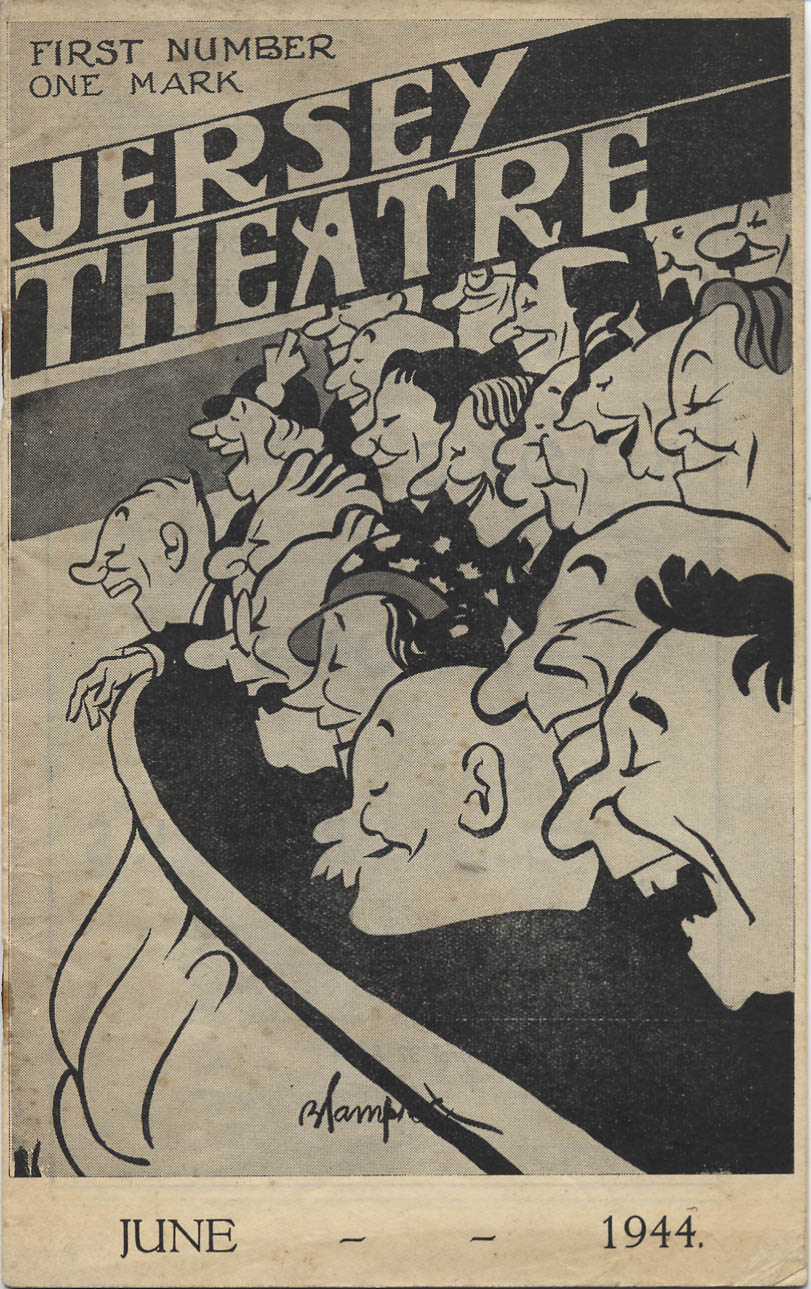 Issue 1
Issue 1 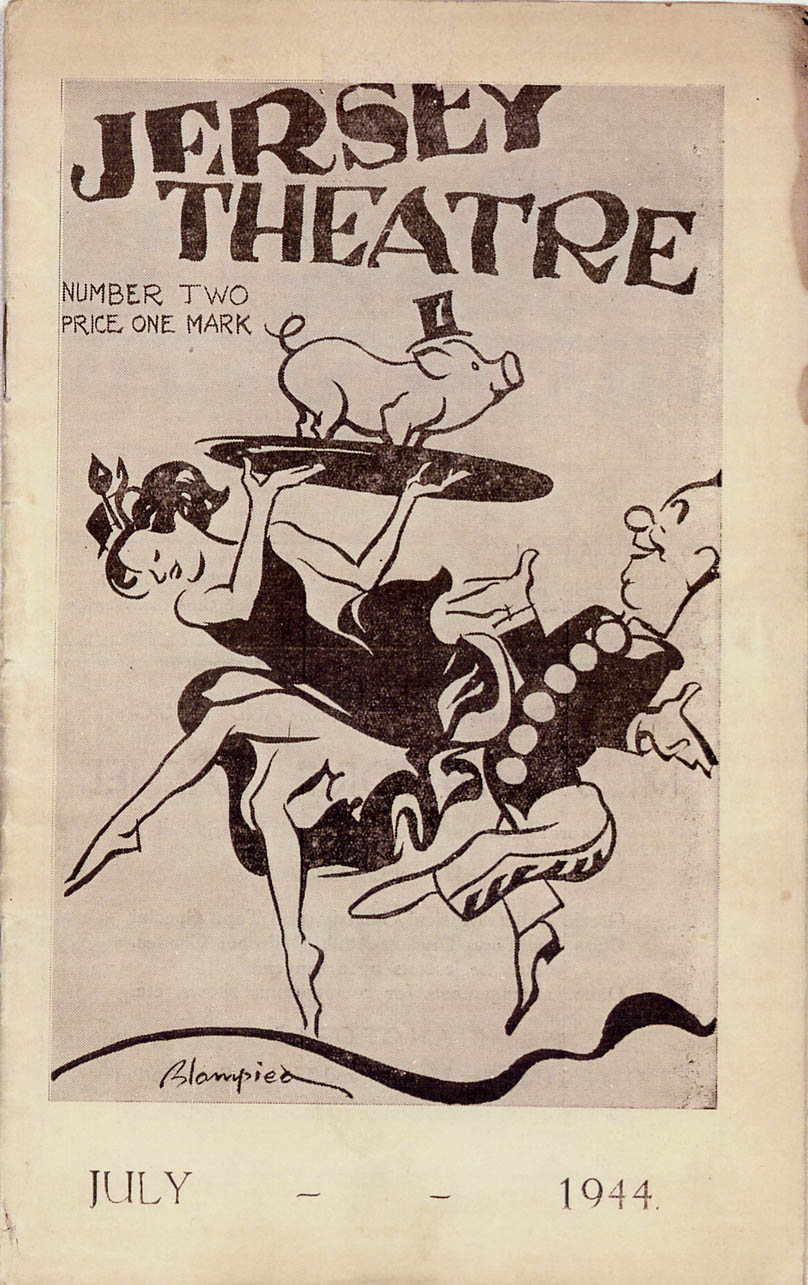 Issue 2
Issue 2 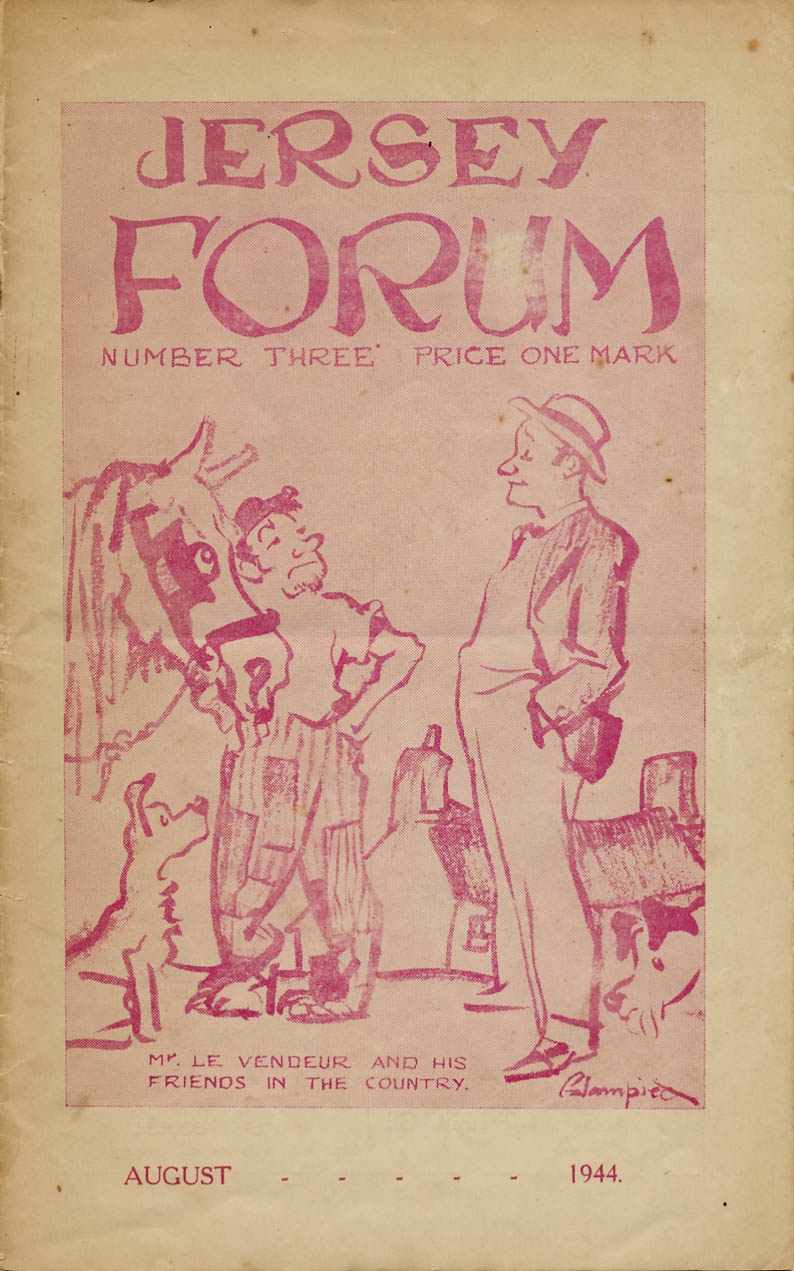 Issue 3
Issue 3 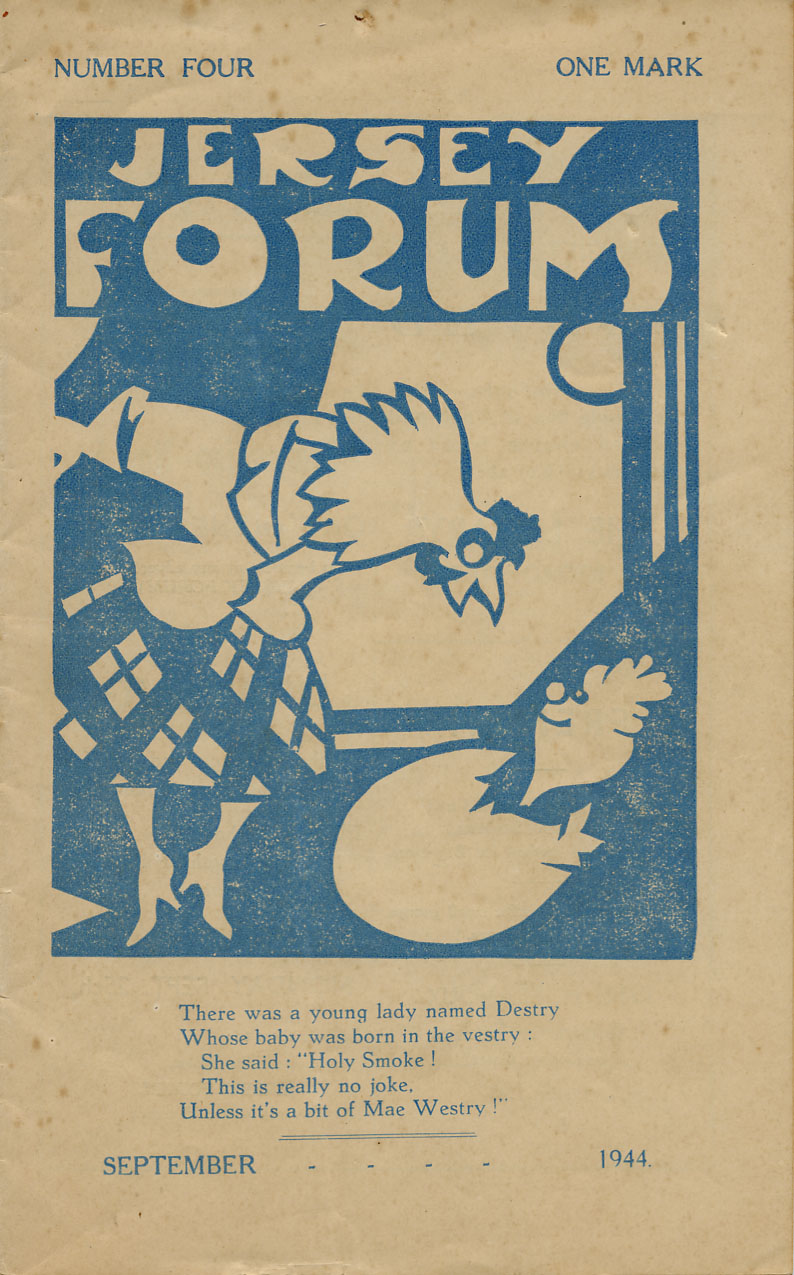 Issue 4
Issue 4 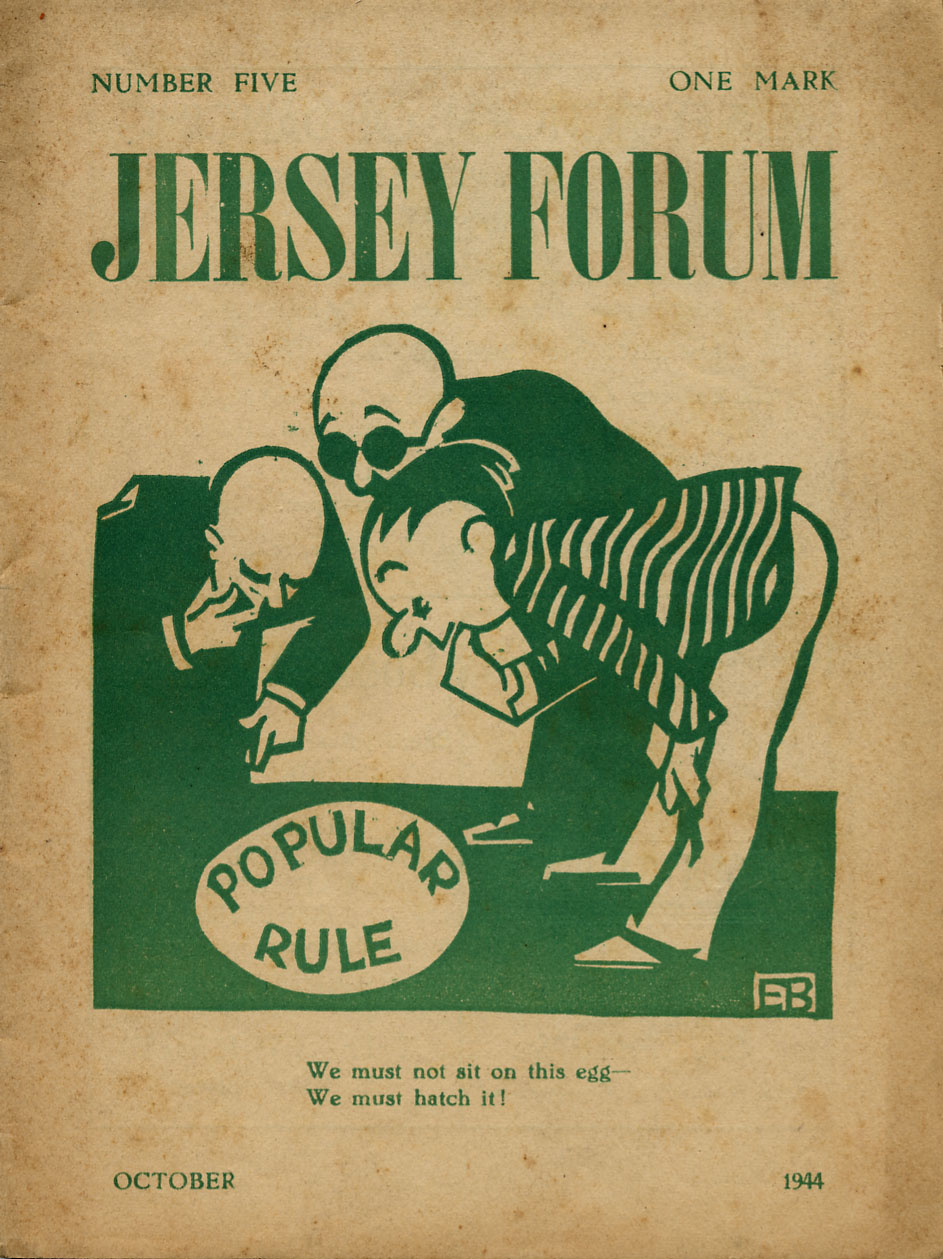 Issue 5
Issue 5
